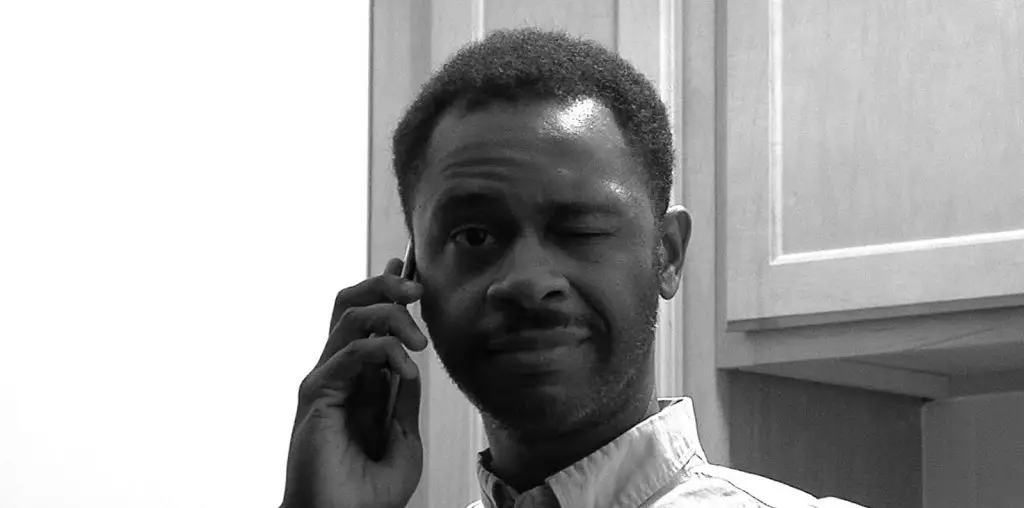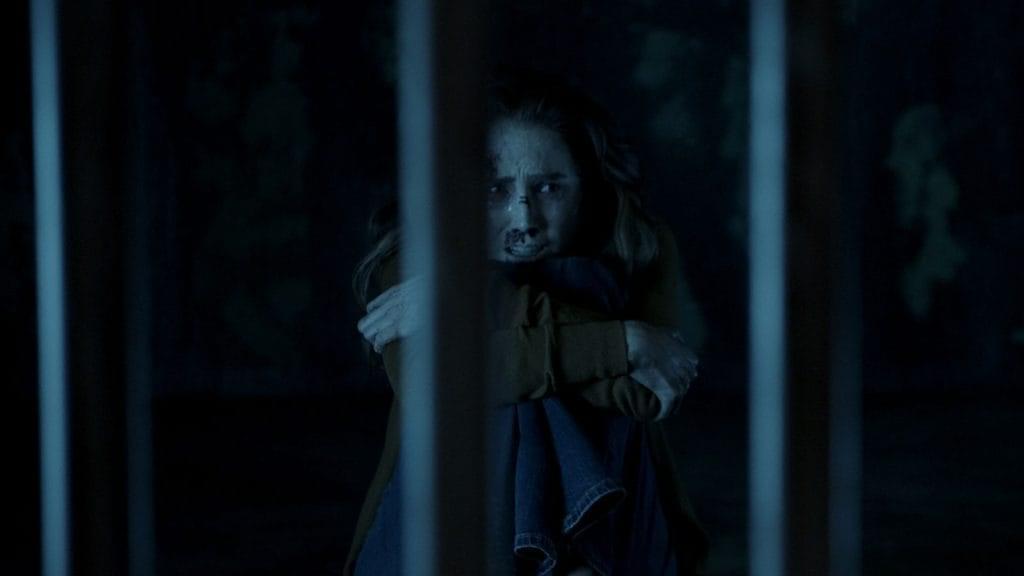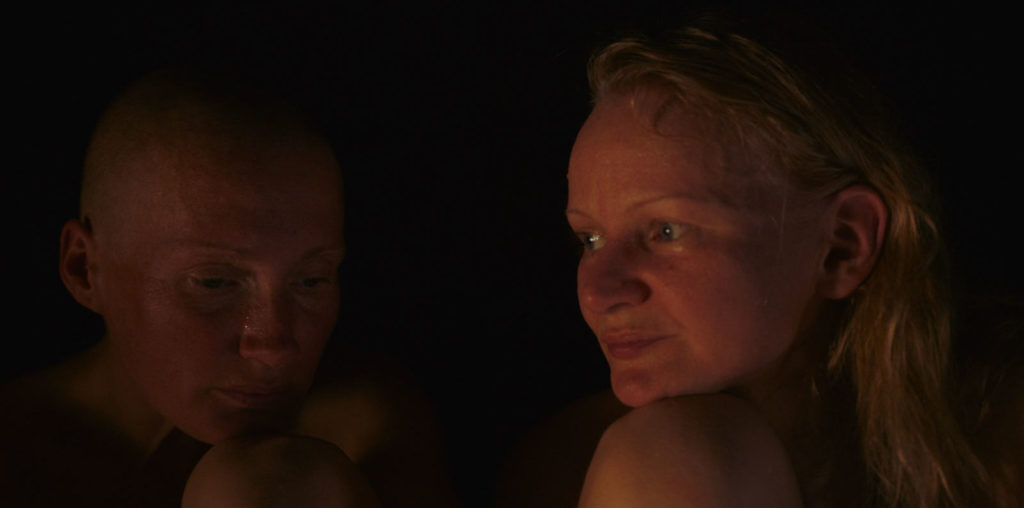
Imagine waking up one morning to a rootless oblivion. You’re a blank slate with no memory. No inkling of where you are. What your name is. No recollection of friends or family members. Do you drink tea or coffee?
“Unknown White Male” is Rupert Murray’s startling documentary, which quickly thrusts us into the panicked shoes of Doug Bruce. Here is a man whose past has gone packing. Literally. In early July 2003, Bruce stumbled through New York subways and Coney Island streets, suddenly unaware of who or where he was.
Clad in shorts, flip-flops, t-shirt, and backpack – but without possession of an identity – Bruce checked into a hospital. His blood was clean of drugs. He endured 26 blood tests, two CAT scans, and a pair of MRIs. Psychiatrists and neurologists perused Bruce’s chart, labeled simply Unknown White Male, and scratched their heads. Except for a tiny tumor on his pituitary gland, scads of medical workups revealed nothing unusual. Bruce was diagnosed with retrograde amnesia, a seldom-seen condition defined by one doctor as a “complete wipeout” of past memory. “You’re scared,” says Bruce in the film, describing his involuntary mind-erase. “You’re in a place where you don’t have any bearings. It’s frightening.”
Whoa. Hold on.
In an age where Oprah Winfrey crucifies James Frey for fabricating details of his multi-million-selling memoir “A Million Little Pieces,” are we to believe that “Unknown White Male” and its too-good-to-be-true premise are legitimate? Think about it. Could Murray and Bruce be conning us? Is Bruce truly the amnesiac he’s presenting? Are publicists milking the Frey debate by marketing “Unknown White Male” – with an “is it real or not” wink – as a controversial picture?
“Proving” retrograde amnesia is tricky business. In the words of an acquaintance in the film, Bruce could be “the world’s greatest bullshitter,” feigning the condition. As “Unknown White Male” eases us through a crash-course in neurology, we’re informed of three major types of long-term memory. Episodic memory concerns events from particular times and places. Semantic memory involves one’s general knowledge of the world, including academics and language. Lastly, procedural memory relates to learning specific skills, such as riding a bicycle, playing a sport, or learning to type.
It’s the first category, episodic, that allegedly pulled an abrupt disappearing act on Doug Bruce. But wouldn’t it be relatively easy to pretend one has “lost” episodic, while continuing to function on semantic and procedural levels, as Bruce does?
Meanwhile, “Unknown White Male” was commissioned by Channel 4, the UK-based production squad responsible for Nick Broomfield’s “Aileen: Life and Death of a Serial Killer.”
Aha!
Isn’t Broomfield the renegade film-shooter from England who publicly denounced Courtney Love at an ACLU meeting for squelching free speech, in his 1998 rock doc, “Kurt and Courtney”? Does this raise a red flag, and again raise issues of credibility? Does Murray follow in Broomfield’s controversy-courting footsteps?
Not on your life.
Some critics have charged that “Unknown White Male” is either “fishy” (as Roger Ebert suggested in a recent column), or intending to stir some controversial, post-Frey pot. But I beg to differ, and offer the following defense.
First of all, Murray’s approach eschews Michael Moore-ish ambush tactics in favor of a relaxed, contemplative style. It hardly screams out, “Look at me!” You won’t find any deer-in-headlights interviews in “Unknown White Male” – only consenting rapport with Bruce, family, friends, and health professionals. “Unknown White Male” slathers itself in politeness.
Murray’s film is actually kinder, gentler, and more thoughtful than most documentaries. In fact, it’s a refreshingly positive variation on the crude, “catch ‘em with their pants down” assault favored by Broomfield and Moore. (If anything, Murray’s considerate tone pays a price by being too even-handed. Aside from the “man versus memory loss” angle, there is little conflict in “Unknown White Male.” Will today’s audience, weaned on Jerry Springer and MTV, embrace Murray’s un-sensational, relatively schism-free approach?)
Meanwhile, having met Murray in Seattle during his press tour for “Unknown White Male,” I’m convinced that he and the film are both authentic. In person, the director is shy and thoughtful – the antithesis of a blustery con man. Murray has American Idol-caliber looks, but seemingly little spotlight-starved ego. He’s more interested in the subtle, philosophical implications of Bruce’s condition than its potentially sensational angles. Meanwhile, his film presents a broad canvas of characters, all of whom provide convincing insights into Bruce’s fractured soul.
The premise behind “Unknown White Male” is the ultimate existential conflict, and Bruce’s forgetful affliction brings with it a host of interpersonal horrors. There’s the father who meets him at the airport, anxious about re-uniting with a son who will not remember him. There’s Bruce’s inability to remember a mother who has died of cancer. There’s the sister whose close relationship with Bruce now lives in her memory, but not his. There’s the buddy who shared a love of Cricket with Doug. “What is West Indian Cricket,” the “new” Bruce responds, when asked of the sport. “A drink, or some kind of insect?”
Murray embraces these images in “Unknown White Male,” fascinated by his subject’s unusual re-birth. Indeed, images are something the director continues to cultivate and collect, even as he’s speaking on the promotional circuit. After our interview, the smiling Londoner raises a digital camera. “What did you like about the film?” he asks. Murray then videotapes my response, as I express admiration for a scene of wispy cloud tops taken from an airplane.
Yeah, I’ve heard from the naysayers and cynics. I know that “Eternal Sunshine of the Spotless Mind” director Michael Gondry was quoted in GQ as saying he didn’t believe the story behind Doug Bruce and “Unknown White Male.” And having done my own web search of Murray’s past short films listed on a press filmography, I can confirm that there’s little written up on these entries. (For instance, why isn’t “Outsiders,” listed as a “profile of the weird and wonderful outsider music scene in the U.S.”, found on the Internet Movie Database?) Even so, I’m convinced that Murray and his film are both the real deals. Call me gullible, but I’m of the mind that perhaps we’re all just a bit too cynical.
Still skeptical? Then read on, as the filmmaker answers questions from Seattle’s swanky “W” Hotel on a characteristically drizzly February afternoon. Bruce might have lost his memory. But for filmgoers, “Unknown White Male” is sure to be an unforgettable experience.
KJ: I notice a wide array of documentaries on your resume. “The Outsiders” was a 2003 feature concerning America’s Outsider Music scene. Have you seen “Derailroaded,” the recent movie following schizophrenic counterculture artist Larry “Wild Man” Fischer? It posed a fascinating question concerning whether he was exploited for his “odd”-ness, or truly respected as an artist.
RM: No, I haven’t seen that film. When we made “The Outsiders,” we were trying to think of the right thing to do. I used to laugh at the people I went to see. I spent a lot of time soul-searching the reason why. I loved them, and loved their music. The people I met were brilliant. The most genuine, sweet, passionate people around. And I found them funny. And I would ask myself, “Is this bad?” Am I laughing for the wrong reasons? I came to the conclusion that I don’t laugh at really nasty people, like bank managers and football hooligans. I don’t find them funny. But if the people I do find funny generate some laughter, I think it’s a good thing.
I met some of the most incredible characters ever, like Bingo Gazingo, on the streets of New York. He’s this eighty-year old sort of beat poet and wrapper. An absolute wordsmith and comic genius. If you looked at him on the street, he appears as a homeless bagman. A tramp, shouting crazily. But he carries all these bags around, full of sheets and sheets of lyrics. The film was a short – about half an hour. We would love to make another one – a sequel. We would like to get all of these incredibly diverse characters on one plane, and fly them over to England. There’s one outsider musician called Jet Lady, who did these crazy songs in the eighties, who is now a jet pilot. We would get her to pilot the plane, bring everybody over, and do a big concert!
We became addicted to meeting (outsider artists). Their life stories are incredible. They’ve been through really tough periods. Despite that, they’ve made this incredible music that’s really from the heart. It’s unfiltered by any outside influences. Just pure, direct emotions and feelings.
KJ: If someone sees “Unknown White Male” and wants to go back into your history to see other projects, like “Outsiders,” are there ways they can acquire these films?
RM: No. Unfortunately, not. Maybe they’ll be on a retrospective DVD in a couple of years. I’ll tell you what I’m gonna do. Tomorrow, I’m sending some short outtakes of “Outsiders” for my web site (www.unknownwhitemale.co.uk).
KJ: At the beginning of “Unknown White Male,” you bring up the question, “How much is our personality determined by the experiences we have had, and how much was already there, as the blueprint for ‘us?’” Do you feel that our personality is most dictated by upbringing, or genetics? Do you have a personal theory on this?
RM: I think that’s an incredibly difficult question to answer. Even though I’ve been through this experience, and met Doug, and thought about it, I don’t think I’m any closer. I think I know a little bit more about the reasons why nature and nurture affect our different personalities. But whether one is dominant over another – I think that’s an unanswerable question. You’ll never get an answer for that.
I can understand what nature is, and what nurture is, in terms of what is contained inside our brains. I think that all identity is tied to memory. So if you have no memory whatsoever, you have no personality. But Doug’s situation doesn’t really answer the question, because he only lost one part of his memory system – that of his autobiographical past, and the experiences that he had personally had. His procedural memory, which is for skills, and his semantic memory were both still intact. If your mother told you to hold your knife and fork properly, you probably don’t remember a single incident of her doing so. She maybe did it ten thousand times, though, and the cumulative effect is transferred into your procedural memory, where you automatically do it. You go to the table, and pick up the knife and fork the way your mother told you to. You have a general knowledge, over time, of that happening. That forms a very essential, automatic part of who you are, and Doug still had that intact.
Had he lost everything – all parts of his memory systems, so that he couldn’t talk, walk, hold his knife and fork, you would have a better idea of whether nature or nurture was dominant.
KJ: Because he lost his episodic memory, did you notice that many long-term friends lamented Doug’s inability to remember early, emotional bonding experiences?
RM: I think that’s undoubtedly the case. He and his younger sister were extremely close after their mother died. He became a kind of surrogate parent. Their bond became extremely close. Because Doug can’t remember that experience of his mother dying and looking after his sister, there are elements of that. I can’t imagine what it would be like as a father, especially if you’re in your fifties and you’ve brought your son up, and he’d been very successful. Then you’re faced with the opportunity of meeting him at the airport, and he doesn’t know anything about you. He doesn’t remember any of the time you spent together. It must be crushing.
KJ: Were there ever times when you either felt it was too intimate to film, or when someone asked you to turn off the camera?
RM: Yeah. A lot of times, Doug had actually filmed himself. He would use the camera as a kind of bridge, or barrier, between him and the people he was meeting. It was a kind of crutch, as it is for me, as a filmmaker – or in social situations. Or dangerous situations. You ask nature photographers what it’s like to shove a camera in front of a leopard seal, and they’ll tell you that it’s much easier than being there without a camera.
When Doug met with his friends Jim and Pete, they had gotten nervous about the meeting and felt that it was turning into some kind of circus. You’ll notice that in that scene, where they meet at the pub, I hang back, at the edge of the door of the pub.
KJ: During the beginning of “Unknown White Male,” it almost looks as if you’re re-constructing a search. A lot of fast, handheld images. I wondered how you decided what to include and what not to, in terms of rebuilding that sense of Bruce’s memory initially being lost.
RM: I wanted to give you the perspective of being in Doug’s shoes, and the experience of what it might have been liked to lose your memory. I wanted to try and imagine what it was like for him, and what must have been going through his head. When he arrived somewhere like Coney Island… well, that’s weird even in the best of times (laughter). It was a Russian-speaking neighborhood. He wondered what country he was in. The signs were in English, but people were speaking Russian.
I thought that the closer I could get the viewer to Doug’s exact experience, the more powerful the film would be. So I tried to get you inside his head, walk in his shoes, and try to experience some of the things that he is experiencing.
KJ: There was a scene of footage shot from inside an airplane, in which the viewer sees cloud tops. That was rather unique.
RM: I filmed that with a beautiful Russian 16 mm camera. They look like something out of the 1920’s. It’s got a beautiful feel to it – a little jerky and home movie-ish, but the picture quality is great. I did lots of plane flights back and forth, from London to Spain. Every time, I would film loads of cloud stuff. There’s something about clouds that is emblematic of memory. Of longing. Dreamy.
KJ: Were you interested in neurology as a hobby before getting involved in this project?
RM: I knew absolutely nothing about it. That’s one of the great things about documentaries and filmmaking. You can become an instant expert on any subject. Something falls in your lap, or an opportunity arises, and you can say, “Oh, I’m gonna learn about that for two years.” It’s fascinating. That was one of the greatest parts for me – reading all the stuff on amnesia, and watching films, as well. Some of it is pretty dense.
I was real interested in philosophy, as well. I read a few books on philosophy and memory. Now, I’m starting to get into the subject of imagination. How does the brain create images?
KJ: There were several philosophers featured in the film.
RM: Mary Warner was one. She is a pretty heavyweight British philosopher. The essential question she asked was, “What is a person?” And is Doug the same person, following his memory loss? I think the answer is yes. I think he is the same person that he was before the accident, but a person altered by a catastrophic event. In the same way that someone would be altered by a car crash, or a near-death experience. It has had an effect on his personality. I suppose the absence of having any memory makes him unaware of some things. Also, maybe a restorative effect on his brain. He’s more articulate. Quicker on the uptake. He seems smarter.
KJ: One of his friends was quoted as saying that Bruce was quite cocky before the accident. It almost sounded as though he was less sympathetic. Do you think that’s a fair summation?
RM: Yeah. Inevitably, you simplify things for a 90-minute film. You have to. Does this film tell you everything about Doug’s amnesia? No. It tells you a fraction. I could only really scratch the surface of something that effected his entire existence. By the same token, have I fully represented his personality, both before and after? No. You get an image on someone, but it’s not fully rounded.
KJ: Was it hell to edit something like this, culling it down and being unable to paint as full a picture as you would like to?
RM: Yes. It’s not a true representation of Doug’s entire life. It’s true to the spirit of a portion of his life.
KJ: Do you have a personal feeling concerning what actually caused the amnesia? You bring up factors like the death of his mother, and his being diagnosed with a pituitary cyst. Do you have a theory what the catalyst was?
RM: If you have a road traffic accident, normally there are three things that went wrong to cause that accident. Someone couldn’t hear, and someone else wasn’t looking, and so forth. It’s a combination of coincidences. I think that’s what happened to him. Possibly he had something wrong with his brain associated with the stress he suffered from his time as a stockbroker, and his mother dying. He maybe fell on the ground and bumped his head. That might have triggered the pituitary gland bleeding, which then triggered the amnesia.
KJ: Would you mind if I were to take your picture?
RM: As long as I can take yours, too.
KJ: I noticed that you took the previous journalist’s picture, too. Are you creating a memory?
RM: Exactly (smiles). Creating a memory.


